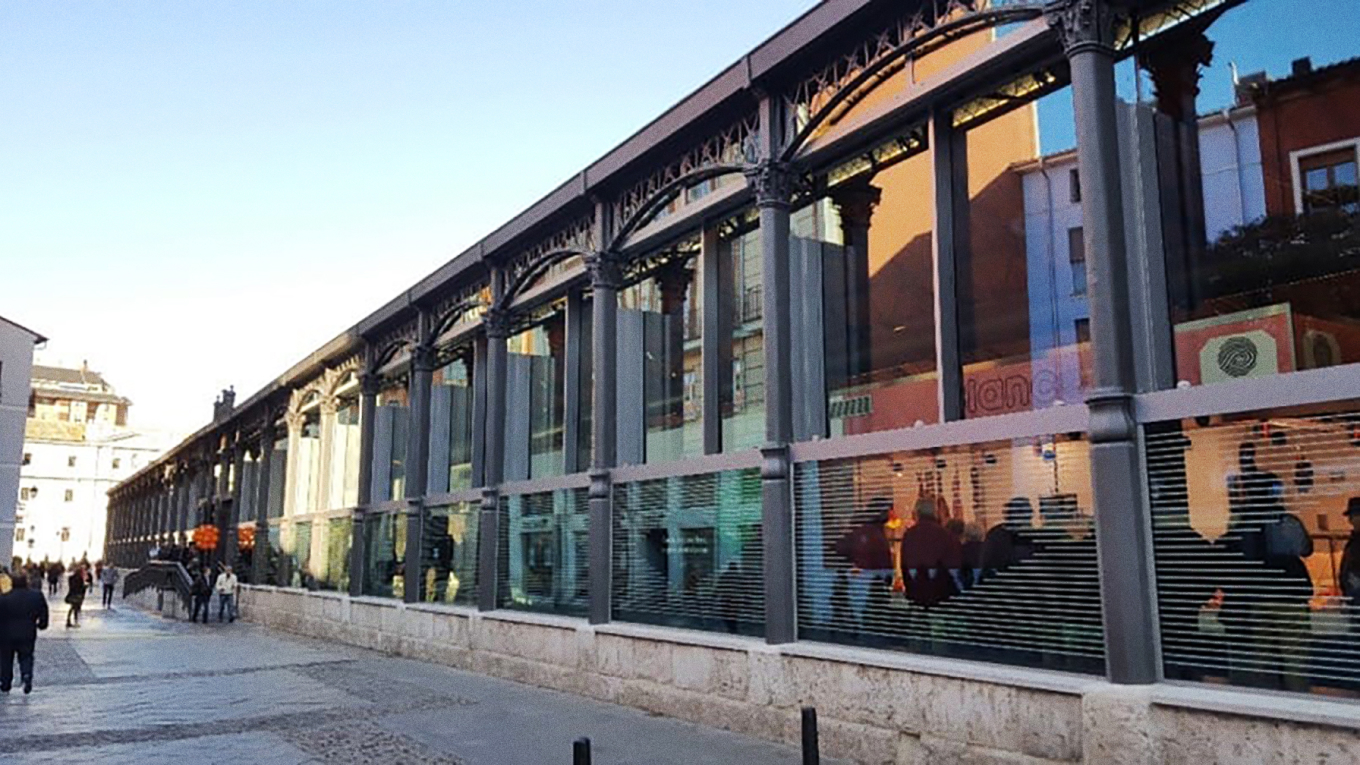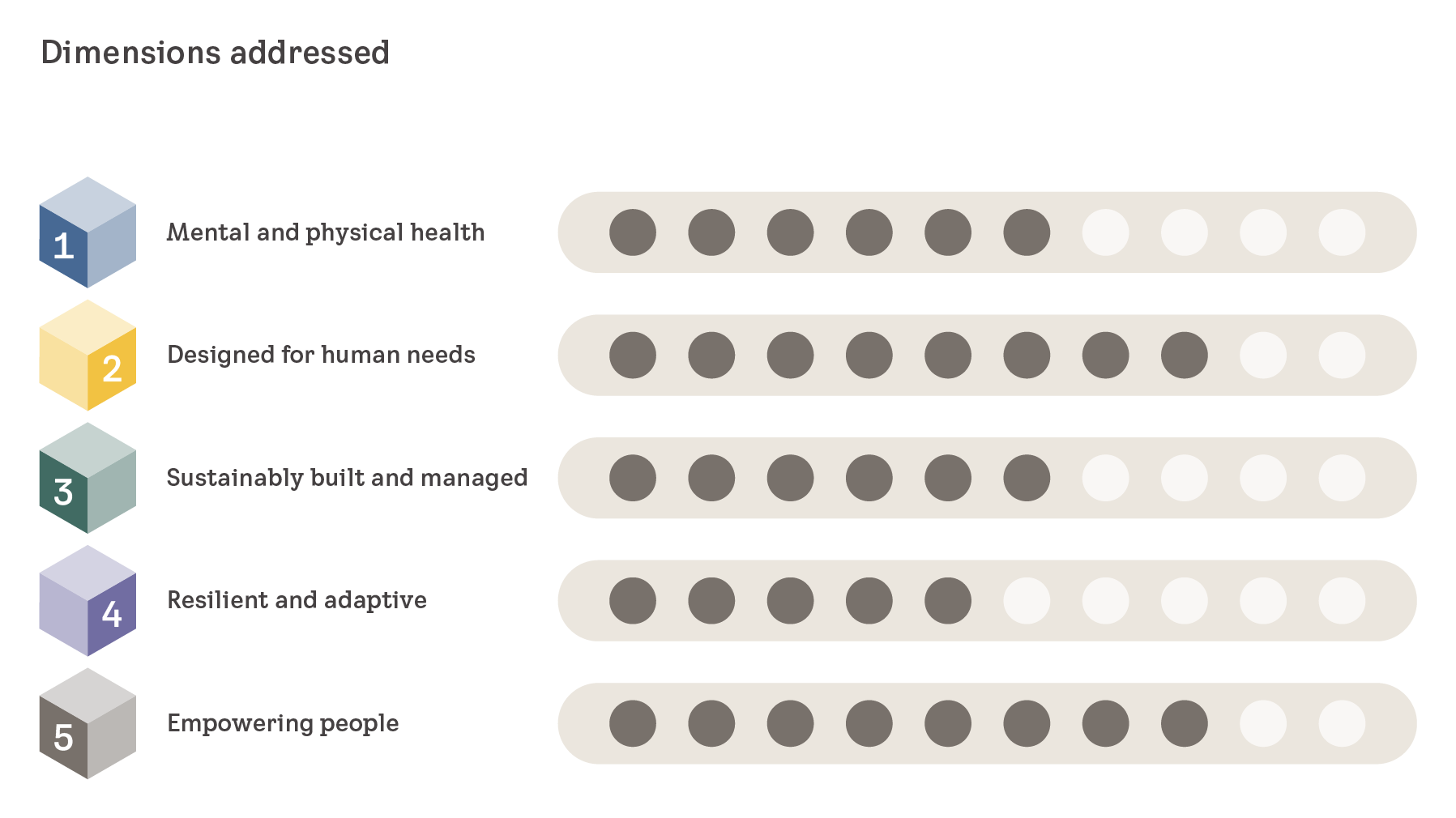
Type of building: Commercial building (market hall)
Year of construction: 1882
Year of renovation: 2016
Location: Valladolid, Spain
Built-up area: 2230m2
Project lead: Jose Maria Llanos
Renovating for year-round use
The market hall in Valladolid, Spain, was built in 1882 and had been last renovated in the 1980s. This latest renovation project aimed at tackling multiple improvements to create a more comfortable market hall in all seasons, better air quality, and reduced resource and energy consumption.
Improvements included:
- Better insulation
- A geothermal heating system
- Natural ventilation through the roof windows, making use of hot air currents to actively ventilate the hall throughout the year
- Building an on-site waste treatment plant
- The renovation maintained the style of the building, adding to the aesthetic appeal of this beautiful market hall.
Dimensions
In order to comprehensively assess the health of the building in this case study, various dimensions were evaluated, each measured through specific indicators relevant to their respective domains. The following figure presents the ratings for each dimension, providing a visual summary of the building's overall health status.

Data insights for Spain
This case uses two data sets related to the Skills and knowledge indicator from the Empowering dimension and IAQ indicator from the Improving mental and physical dimension.
A need for skilled labour
Spain is experiencing a drop in the number of graduates in the construction sector since 2015. This is an alarming trend, as the Renovation Wave could only happen with skilled labour in all countries of the EU, and complex projects like this market hall exemplify what highly skilled people can achieve.
The importance of air quality
A major concern for the market renovation was to increase air quality through ventilation. Ventilation is not measured at the EU level, but several other data sources can be used to extrapolate issues with air quality, such as premature deaths from air pollution. Thankfully, the number of premature deaths from air pollution has decreased since 2015 for Spain and the whole EU.


